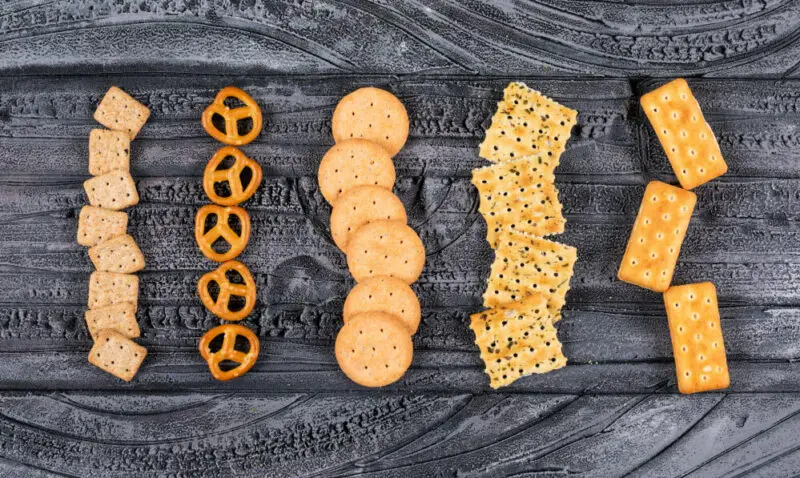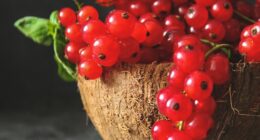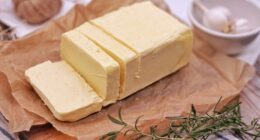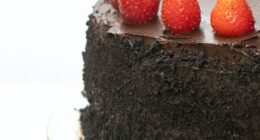Cookies are soft, chewy treats, often with added ingredients like chocolate chips. Biscuits are crunchy and can be sweet or savory, like crackers.
Have you ever wondered about the difference between cookies and biscuits? You’re not alone! There’s an ongoing debate, especially between the American and British usage. In the US, the term “cookies” can refer to both biscuits and cookies, while an American biscuit is similar to a British scone. On the other hand, in the UK, cookies are chunkier, softer, and moister, while biscuits are firmer, smaller, and can be topped with icing or chocolate.
In this article, we will dive into the differences between cookies and biscuits, exploring their texture, ingredients, and cultural variations. Whether you have a sweet tooth or enjoy a more savory treat, understanding the distinctions between these delicious baked goods will surely satisfy your curiosity.
Key Takeaways:
- The term “cookies” can have different meanings depending on the region. In the US, it encompasses both biscuits and cookies, while in the UK, cookies have a softer, moister texture compared to biscuits.
- Cookies are often chunkier and include add-ins like nuts or chocolate chips, while biscuits have a simpler appearance.
- Cultural variations exist in the definitions and traditions associated with cookies and biscuits, with different regions having their own preferences and customs.
- The ingredients and textures of cookies and biscuits differ, with biscuits being firmer and cookies having a wider variety of ingredients.
- Both cookies and biscuits offer a wide range of flavors and options, making them beloved treats enjoyed by people of all ages across the globe.
A Closer Look at Cookies
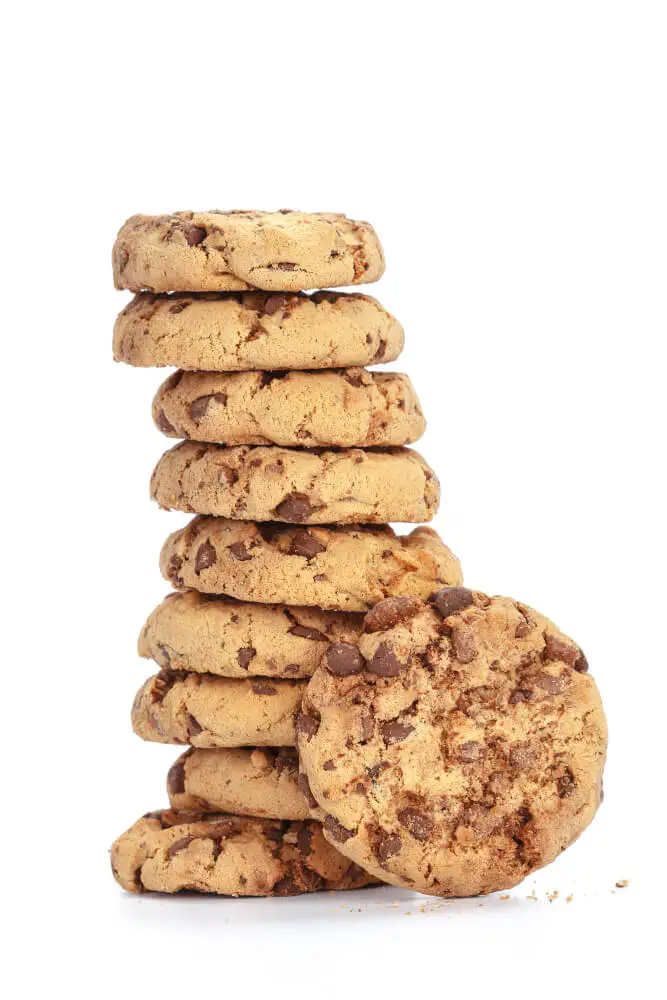
When it comes to cookies, there’s a lot more to discover beyond their delicious taste. Let’s dive into the world of cookies and explore what makes them unique.
So, what exactly defines a cookie? In simple terms, cookies are baked treats that are typically chunkier, softer, and moister compared to their biscuit counterparts. They come in a variety of flavors and are often made with whole or chopped ingredients such as nuts, chocolate chips, or raisins. The inclusion of these add-ins gives cookies their distinct texture and taste.
Cookie vs. Biscuit: While the terms “cookie” and “biscuit” are sometimes used interchangeably, there are noteworthy differences between them. Biscuits tend to be firmer, smaller, and have a slightly crispier texture. On the other hand, cookies are softer, chewier, and have a more cake-like consistency.
Similarities: Despite their differences, cookies and biscuits share some similarities. Both are baked goods that are often enjoyed as standalone treats or paired with a hot beverage like tea or coffee. They also serve as delightful snacks for any time of the day.
An Ode to Cookies: Cookies have garnered quite a following, with dedicated shops and stalls exclusively selling these delectable treats. Their appeal lies not only in their taste but also in the pleasure they bring to consumers. Whether it’s a classic chocolate chip cookie or an indulgent double chocolate cookie, there’s a cookie for every palate.
Exploring Biscuits
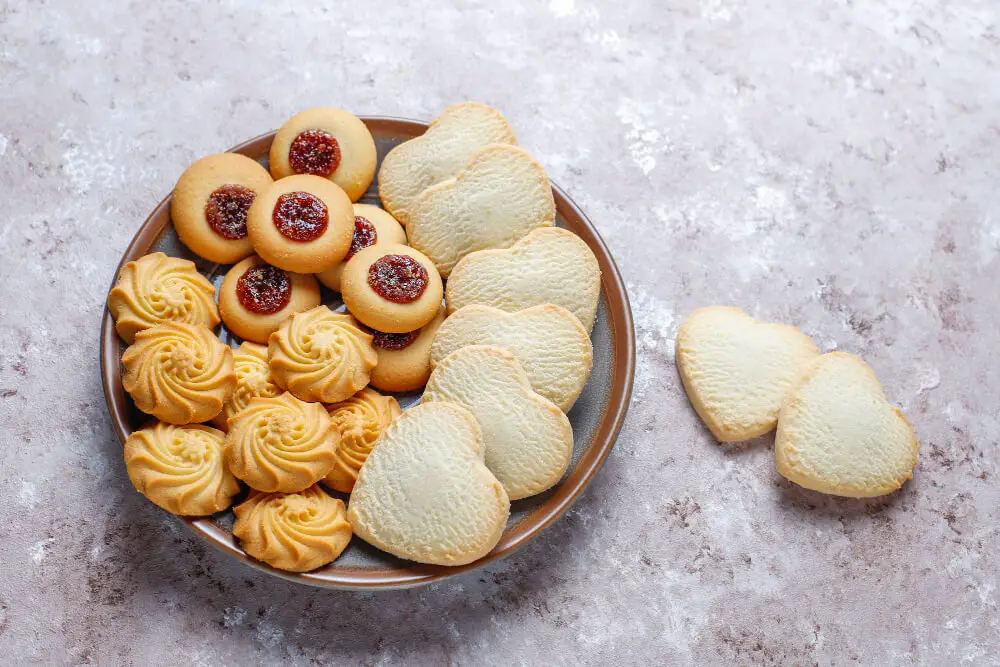
Biscuits, deriving from the Latin word meaning ‘twice baked,’ are firmer than cookies. They are usually smaller in size and can contain ingredients like currents or be pressed together with fillings. Biscuits are often topped with icing or chocolate and are commonly dipped in tea. They have a simple appearance and lend themselves to various decorative elements.
Characteristics of Biscuits:
- Firmer texture
- Smaller in size
- Possible additions of currents or fillings
- Topped with icing or chocolate
- Commonly dipped in tea
- Simple appearance, suitable for decoration
To illustrate the characteristics of biscuits, consider the following table:
| Biscuit Characteristics | |
|---|---|
| Firmer texture | |
| Smaller in size | |
| Possible additions of currents or fillings | |
| Topped with icing or chocolate | |
| Commonly dipped in tea | |
| Simple appearance, suitable for decoration |
As seen in the table, biscuits have a firmer texture, smaller size, and are often topped with icing or chocolate. They are commonly dipped in tea and have a simple appearance that lends itself to decorative elements.
Stay tuned for the next section which delves into the art of decorating both cookies and biscuits!
Decorating Cookies and Biscuits: Tips and Ideas
When it comes to decorating cookies and biscuits, the possibilities are endless. Whether you’re looking to add some extra flair to your treats or create a stunning centerpiece for a special occasion, cookie and biscuit decorating allows you to showcase your creativity and delight your taste buds. Here are some tips and ideas to inspire your cookie and biscuit decorating adventures:
Decorating Ideas for Biscuits
- Using fondant icing: Roll out colorful fondant and cut it into shapes like flowers, hearts, or stars. Place the fondant shapes on top of your baked biscuits for an instant burst of color and whimsy.
- Color melts with sprinkles: Melt colorful candy melts and dip half of your biscuits into the melted mixture. While the candy melts are still wet, generously sprinkle decorative sprinkles on top for a vibrant and eye-catching design.
- Subtle icing drizzles: Prepare a simple icing glaze with powdered sugar and milk. Use a spoon or a piping bag to drizzle the glaze in thin lines over the surface of your biscuits. The elegant and delicate drizzles will add a touch of sophistication to your treats.
- Versatile marzipan: Roll out marzipan into thin sheets and cut it into shapes or use cookie cutters to create different designs. Gently place the marzipan decorations on your biscuits for a unique and flavorful twist.
Cookie Decorating Ideas
- Fondant icing and different shapes: Roll out colored fondant and use cookie cutters to create various shapes like flowers, animals, or letters. Place the fondant shapes on top of your baked cookies and press gently to adhere.
- Dipping in chocolate with sprinkles: Melt chocolate and dip one half or one-third of your cookies into the melted goodness. Before the chocolate sets, generously sprinkle festive or colorful sprinkles over the coated area for a playful and delightful look.
- Icing and sprinkles: Prepare a vibrant royal icing by mixing powdered sugar, water, and food coloring. Decorate your cookies by piping different designs, such as stars, dots, or swirls, with the colored icing. While the icing is still wet, add sprinkles of your choice to create texture and visual interest.
- Elaborate designs with multiple colors: Use a variety of food coloring to divide your icing into different hues. With piping bags or squeeze bottles, create intricate designs on your cookies, allowing the colors to blend and complement each other. This technique is perfect for special occasions or creating personalized treats.
Remember, cookie and biscuit decorating is all about experimenting, having fun, and letting your imagination run wild. Whether you opt for a simple and elegant design or go all out with complex and eye-catching decorations, the end result will be a batch of delectable treats that are as visually appealing as they are delicious.
Get creative and make your cookies and biscuits truly special by incorporating these decorating tips and ideas. Your creations will not only taste delightful but also serve as a visual feast for the eyes. So grab your apron, your favorite cookie or biscuit recipe, and let the decorating magic begin!
Origins and History of Cookies and Biscuits
Biscuits have a long history dating back to ancient times, where they were favored for their durability during long journeys. The term “biscuit” comes from the Latin “bis coctum,” meaning ‘twice baked,’ a method used to make them crumbly and extend their shelf life.
Cookies, on the other hand, have a more recent origin, originating from Persia around the 7th century. Early cookies were made by baking small portions of cake batter until dry and were flavored with ingredients like rosewater and spices. As cookies and biscuits spread worldwide, they evolved with unique flavors and textures, resulting in the variety we enjoy today. In the United States, biscuits are closely associated with Southern cuisine, often served with savory dishes. Meanwhile, the chocolate chip cookie, invented in the 1930s, remains an iconic American treat, created by Ruth Graves Wakefield, who added chopped chocolate to her cookie dough.
To visually engage with the history and evolution of cookies and biscuits, take a look at the table below:
| Time Period | Event |
|---|---|
| Ancient Times | Biscuits used as durable, long-lasting food for journeys |
| 7th Century | Origins of cookies in Persia, flavored with rosewater and spices |
| 1930s | Creation of the iconic chocolate chip cookie by Ruth Graves Wakefield |
| Present Day | Wide variety of cookies and biscuits with unique flavors and textures |
Differences in Ingredients and Texture
When it comes to biscuits and cookies, there are notable differences in both their ingredients and texture. Let’s take a closer look at these variations:
Ingredients
Biscuits are typically made with the following ingredients:
- Flour
- Butter or shortening
- Milk or buttermilk
- Baking powder
Cookies, on the other hand, have a wider range of ingredients, including:
- Flour
- Sugar
- Butter
- Baking powder
- Eggs
In addition to these base ingredients, cookies often incorporate add-ins such as chocolate chips, nuts, or dried fruit for added flavor and texture.
Texture
The texture of biscuits and cookies also differs significantly. Biscuits are known for their flaky and layered texture. When baked correctly, they have a crisp exterior and a tender, soft interior.
Cookies, on the other hand, can vary in texture depending on the recipe and baking time. They can be chewy, with a soft and moist center, or crisp, with a more crunchy texture.
Overall, the differences in ingredients and texture contribute to the unique characteristics and experiences of both biscuits and cookies.
| Biscuits | Cookies |
|---|---|
| Typically made with flour, butter or shortening, milk or buttermilk, and baking powder | Generally made with flour, sugar, butter, baking powder, and eggs |
| Have a flaky and layered texture when baked correctly | Can be chewy or crisp, depending on the recipe and baking time |
Varieties of Cookies and Biscuits
When it comes to cookies and biscuits, the options are endless. With their own unique flavors and textures, these beloved treats cater to a variety of preferences. Let’s explore some popular types of biscuits and cookies:
Biscuit Varieties
Here are a few popular types of biscuits:
| Biscuit Variety | Description |
|---|---|
| Buttermilk Biscuits | A classic southern delicacy known for its fluffy texture and tangy flavor. |
| Cheddar Cheese Biscuits | Made with sharp cheddar cheese, these biscuits are savory and perfect for cheese lovers. |
| Sweet Biscuits with Cinnamon or Other Spices | These biscuits are a delightful mix of sweetness and aromatic spices like cinnamon, nutmeg, or cardamom. |
Cookie Varieties
If you have a sweet tooth, these cookie varieties will satisfy your cravings:
| Cookie Variety | Description |
|---|---|
| Chocolate Chip Cookies | A classic favorite, these cookies are loaded with chunks of delicious chocolate. |
| Oatmeal Cookies | Packed with oats, these cookies have a satisfying chewy texture and may include add-ins like raisins or nuts. |
| Sugar Cookies Decorated with Icing or Sprinkles | These cookies are often cut into festive shapes and decorated with colorful icing or sprinkles. |
Whether you prefer a buttery biscuit or a chewy cookie, the world of varieties is sure to please every palate.
Cultural Differences in Biscuits and Cookies
The definitions and cultural significance of biscuits and cookies can vary across different regions. Let’s take a closer look at how these delightful treats are perceived and enjoyed around the world.
North America
In North America, biscuits are often associated with bread and are typically served as a side dish with savory meals. These biscuits are soft and fluffy on the inside, with a slightly crispy exterior. On the other hand, cookies are well-loved sweet treats that come in various flavors and textures.
Europe
In Europe, the term “biscuit” is more closely related to what North Americans call “cookies.” Biscuits in Europe are often enjoyed alongside a cup of tea, where they are perfect for dipping. They can also be used as a base for desserts like biscuit cakes or cheesecakes.
Asia
In Asia, biscuits and cookies hold a special place in the region’s culinary traditions. These treats come in unique flavors and textures, showcasing the diverse cultural influences. Biscuits and cookies are often given as gifts during festive occasions as a symbol of joy and celebration.
These cultural differences in the definitions and traditions surrounding biscuits and cookies highlight the rich diversity of culinary experiences around the world.
| Region | Biscuits | Cookies |
|---|---|---|
| North America | Soft, fluffy, often served with savory dishes | Sweet treats in various flavors and textures |
| Europe | Similar to North American cookies, enjoyed with tea or used as a base for desserts | |
| Asia | Unique flavors and textures, given as gifts during special occasions |
Conclusion
After comparing cookies and biscuits, it’s clear they have their unique characteristics. The big difference is in their texture: biscuits are hard and flaky, while cookies are softer and chewier, often with added nuts or chocolate chips for extra flavor. While they’re enjoyed worldwide, cookies tend to be more indulgent, while biscuits have a simpler taste. Whether you like a warm, gooey cookie or a crisp biscuit with tea, both treats offer plenty of flavors to enjoy in moderation as part of a balanced diet, bringing comfort and pleasure to people of all ages and backgrounds.
FAQ
What is the difference between cookies and biscuits?
Cookies and biscuits have differences in texture, ingredients, and cultural variations. Cookies are usually chunkier, softer, and moister, while biscuits are firmer and smaller. The term “cookie” is used in the US to refer to both biscuits and cookies, while “biscuit” in the US is similar to a British scone.
How would you define cookies?
Cookies are typically chunkier, softer, and moister than biscuits. They often contain whole or chopped ingredients like nuts, chocolate chips, or raisins. They focus more on the texture and flavor of the cookie itself and are less commonly decorated on the outside.
Is there a difference between biscuits and cookies?
Yes, there is a difference between biscuits and cookies. Biscuits are firmer, smaller, and can be topped with icing or chocolate. They are often dipped in tea and have a simple appearance. Cookies, on the other hand, are softer, chunkier, and include add-ins like nuts or chocolate chips.
How are cookies and biscuits decorated?
Biscuits are more readily decorated with elaborate designs, while cookies have intriguing elements within the bake itself. Decorating ideas for biscuits include fondant icing, color melts with sprinkles, icing drizzles, or marzipan. Cookie decorating ideas can vary from using different shapes and colors with fondant icing to dipping in chocolate with sprinkles.
What is the history of cookies and biscuits?
Biscuits have been a staple food for long journeys in ancient civilizations, while cookies are believed to have originated in Persia and spread around the world. Biscuits are often associated with Southern cuisine in the US, while chocolate chip cookies are a popular variety with nostalgic associations.
What are the differences in ingredients and texture between biscuits and cookies?
Biscuits are typically made with flour, butter or shortening, milk or buttermilk, and baking powder. They have a flaky and layered texture when baked correctly. Cookies, on the other hand, have a wider variety of ingredients such as flour, sugar, butter, baking powder, and eggs. They can also include add-ins like chocolate chips, nuts, or dried fruit. Cookies can be chewy or crisp, depending on the recipe and baking time.
What are some popular varieties of biscuits and cookies?
Popular biscuit varieties include buttermilk biscuits, cheddar cheese biscuits, and sweet biscuits with cinnamon or other spices. Popular cookie varieties include chocolate chip cookies, oatmeal cookies, and sugar cookies decorated with icing or sprinkles. There is a wide range of options to suit different preferences.
What are the cultural differences in biscuits and cookies?
Biscuit and cookie definitions and cultural significance can vary depending on the region. In North America, biscuits are associated with bread and often served with savory dishes, while cookies are sweet treats. In Europe, biscuits are similar to what North Americans call cookies and are enjoyed with tea or used as a base for desserts. In Asia, biscuits and cookies come in unique flavors and textures and are often given as gifts during special occasions.
Is there a conclusion about cookies and biscuits?
Both cookies and biscuits have their unique traits and variations. The main difference lies in their texture, with biscuits being hard and flaky, and cookies being softer and chewier. These beloved treats have cultural significance across different regions and offer a wide variety of flavors and options. Enjoying them in moderation as part of a balanced diet can bring comfort and pleasure.
Source Links
- https://www.momswhothink.com/biscuit-vs-cookie/
- https://www.renshawbaking.com/gb/what-is-the-difference-between-a-cookie-and-a-biscuit/
- https://steemit.com/food/@purplmonsta/biscuits-vs-cookies
Image Credits
Featured Image By – 8photo on Freepik
Image 1 By – fabrikasimf on Freepik
Image 2 By – azerbaijan_stockers on Freepik
